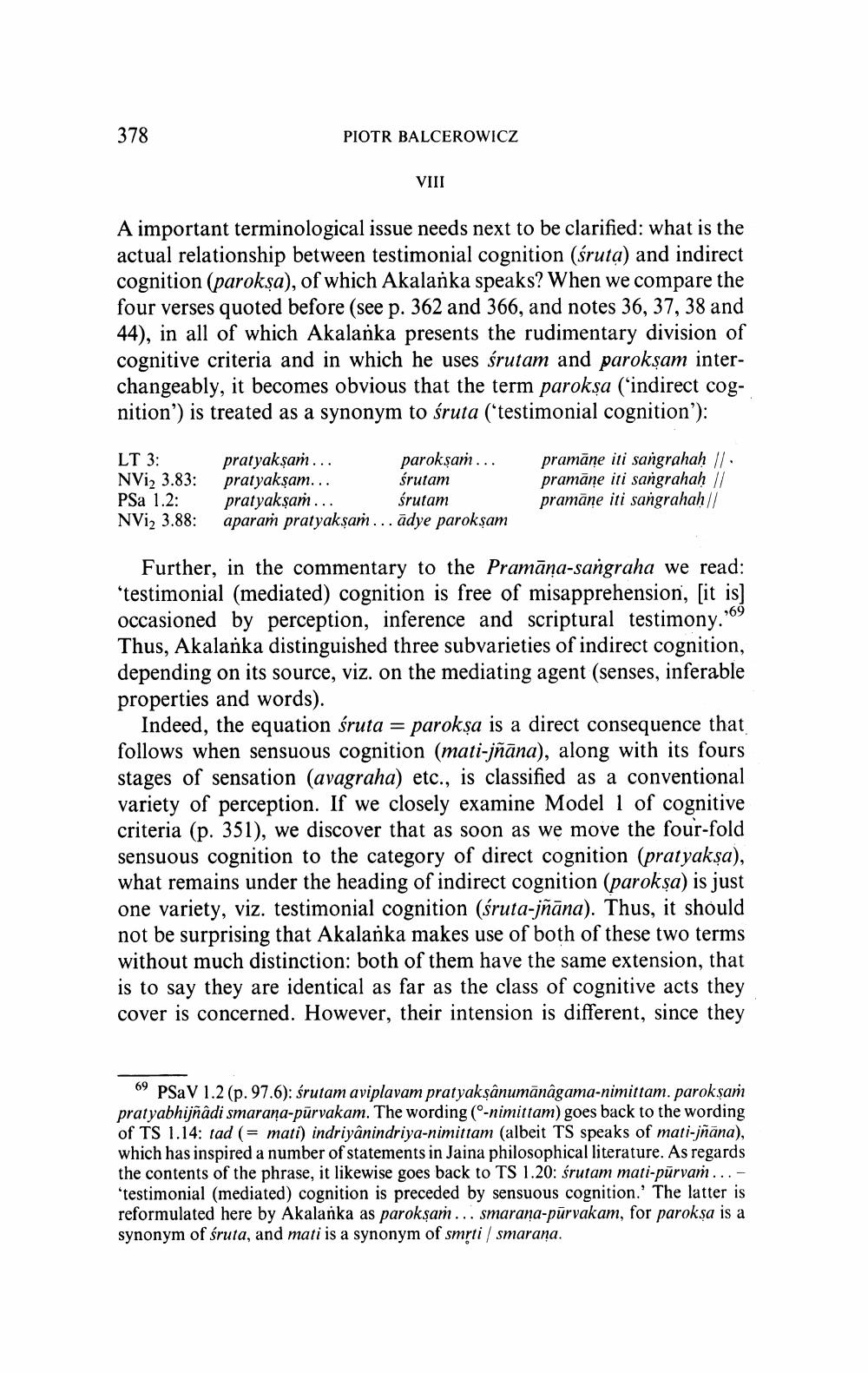________________
378
PIOTR BALCEROWICZ
VIII
A important terminological issue needs next to be clarified: what is the actual relationship between testimonial cognition (śruta) and indirect cognition (parokşa), of which Akalanka speaks? When we compare the four verses quoted before (see p. 362 and 366, and notes 36, 37, 38 and 44), in all of which Akalanka presents the rudimentary division of cognitive criteria and in which he uses śrutam and parokşam interchangeably, it becomes obvious that the term paroksa “indirect cognition') is treated as a synonym to śruta ("testimonial cognition'):
LT 3: NVi, 3.83: PSa 1.2: NVi2 3.88:
pratyakşam ... parokşam... pratyakşam...
śrutam pratyakşam... śrutam aparaṁ pratyakşam... adye parokşam
pramāne iti sangrahah //. pramāne iti sangrahah // pramāne iti sangrahah//
Further, in the commentary to the Pramāna-sangraha we read: "testimonial (mediated) cognition is free of misapprehension, [it is) occasioned by perception, inference and scriptural testimony.ro Thus, Akalanka distinguished three subvarieties of indirect cognition, depending on its source, viz. on the mediating agent (senses, inferable properties and words).
Indeed, the equation śruta = parokşa is a direct consequence that follows when sensuous cognition (mati-jñāna), along with its fours stages of sensation (avagraha) etc., is classified as a conventional variety of perception. If we closely examine Model 1 of cognitive criteria (p. 351), we discover that as soon as we move the four-fold sensuous cognition to the category of direct cognition (pratyakşa), what remains under the heading of indirect cognition (parokşa) is just one variety, viz. testimonial cognition (śruta-jñāna). Thus, it should not be surprising that Akalanka makes use of both of these two terms without much distinction: both of them have the same extension, that is to say they are identical as far as the class of cognitive acts they cover is concerned. However, their intension is different, since they
69 PSaV 1.2 (p. 97.6): śrutam aviplavam pratyakşânumānāgama-nimittam. parokşam pratyabhijñādi smarana-pürvakam. The wording (-nimittam) goes back to the wording of TS 1.14: tad (= mati) indriyanindriya-nimittam (albeit TS speaks of mati-jñāna), which has inspired a number of statements in Jaina philosophical literature. As regards the contents of the phrase, it likewise goes back to TS 1.20: śrutam mati-pūrvam ... - "testimonial (mediated) cognition is preceded by sensuous cognition. The latter is reformulated here by Akalanka as parokşam ... smarana-pūrvakam, for paroksa is a synonym of śruta, and mati is a synonym of smrti/smarana.




